Here at Seeker, we believe that every day is Earth Day, and that respecting the planet is about making small, simple changes. We believe that sustainable tourism isn’t about giving something up, but about gaining: knowledge, history, respect, love, creativity. We believe that change starts now, with us, and that everyone can make a difference.
Want to join, but not sure where to begin? We’ve compiled a list of 101 ways to travel more responsibly. From booking nonstop flights and staying on trail to skipping the hotel buffet and bringing your own doggie bags, there’s something for everyone—whether you’re chillin’ at home or tearing it up on the road.
Sustainable Travel Tips for: Before you leave

1. Pack light
It may seem like small beans in the grand scheme of things, but the weight of your bag actually affects how much fuel your plane consumes. According to Delta, it’s estimated that “the amount of jet fuel used to move an object is 4% of that object’s weight per hour.” To do your part, pack layers (instead of bulky jackets), keep our shoes on your feet, and don’t forget to use packing accessories.
2. Skip the plastic wrap
Sure, we get it, you want to protect your stuff. But avoid being *that* traveler who wraps their luggage in single-use cling wrap. Not only does it prevent TSA from doing their jobs efficiently, but it’s a total waste of plastic. Instead, invest a reusable luggage cover or skin to keep your bag protected.
3. Don’t buy new clothes
It’s estimated that less than 2% of clothing workers (AKA, the folks who put clothes on our bodies) earn a fair wage while most of us have closets full of barely-worn fits. Ahead of your next trip, we recommend shopping your own closet before running to the closest chain store or ordering from Amazon.
4. …But if you do, check your local thrift store first
Wearing secondhand clothing is one of the best ways to reduce your impact. Not only are you going to save a ton of money and look bomb in your recycled vintage wear, but you’ll be reducing the amount of unwanted clothing that goes into the landfill each year (roughly 17 million tons in 2018, according to the EPA).
5. Borrow gear
A great way to save money and unnecessary waste is to borrow things that you don’t have. Before you spend the big bucks on a new mountain bike, golf clubs, and a sh*t ton of ski gear, put the word out to friends, family, and on community buy/sell/trade groups like Facebook and NextDoor.
6. …Or plan to rent when you get there
Even better than traveling with borrowed gear is renting it when you get there. Most golf courses and ski resorts are more than happy to hook you up for a day (or week) of fun at an affordable rate. Companies like REI will even help arrange local in-store pick-ups if your destination isn’t set-up for rentals.
7. Assemble your zero-waste kit
It’s 2023: have you mastered your zero-waste kit yet? Keeping small, reusable items with you will not only help cut-down on plastic waste, but it might also save you in a pinch (have you tried eating pudding on a train without a spoon? Because we have!). Kits should be personal and catered to you, but the best ones usually include: a reusable water bottle, mug, straw, bamboo cutlery, cloth napkin and anything else that replaces disposables.
8. Go digital
At the check-in counter, you just need your passport to register for your flight; no one will even ask for your printed e-ticket.
9. …But if you prefer paper, print it at home using eco-conscious copy paper
Recycled paper is made from a combination of post-consumer and pre-consumer paper (unsold paper discarded at the mill), and it works just as well as the standard white stuff.
10. Install a smart thermostat
If you’re in the market for a smart thermostat (we like this one), program it to vacation mode so that it knows you’re away. You can even set up notifications and make changes while sipping cocktails and sunning on the beach in Santorini.
11. Power down your home
Don’t forget to unplug all devices with external power (laptops, phone chargers, gaming set-ups) and power down anything with standby mode (TVs, desktop computers).
12. Turn off the lights
This one might seem like a no-brainer, but turn off every light switch before you leave. Security conscious? No worries. Hook your lights up to a timer instead of leaving them on 24/7.
13. Draw curtains and lower blinds
Close your drapes and lower the blinds to block the sun and save energy while you’re away.
14. Keep your refrigerator full
Surprise! A full refrigerator is actually more energy efficient than one that’s half empty. But you’re not down to come back to a fridge full of expired food, you can fill any extra space with Tupperware containers or pitchers of water.
Sustainable Travel Tips for: Getting there

15. Drive instead of fly
Ok, this one won’t work if you’re jet-setting overseas. But visiting Grandma a few states away? Hit the road. Driving generates less greenhouse-gas emissions than flying. The shorter the distance from home you travel, the lower your carbon footprint.
16. Take advantage of the carpool lane
Carpooling is more earth-friendly than driving alone — plus you get to use the carpool lane and share snacks.
17. Book a nonstop flight
This one is a total win-win-win. Takeoff and landing are the most energy intensive portions of a flight, so by booking nonstop, you can get to your destination quicker, avoid that classic connecting-flight-panic, and reduce your carbon footprint.
18. Pick an IATA airline
Today, there are over 30 IATA (International Air Transport Association) airlines that offer carbon offset programs with the goal of neutralizing carbon emissions and investing in carbon reduction projects.
19. Choose your plane wisely
Old planes guzzle fuel, new planes are typically lighter and more efficient.
20. Avoid first class and business class
Get rid of business class* and save the planet? Sign us up. First class and business class take up a lot of space at the front of the plane, leaving less room for economy. The fewer people on the aircraft, the higher the per-person carbon contribution.
*Get rid of business class as a luxury upgrade— but keep seats with extra room for accessibility.
21. Contribute to carbon offset programs
Every time you fly, consider making a donation to a carbon offset program that plants trees or puts up wind turbines. Our favorites are NativeEnergy and TerraPass.
22. Limit plastic usage in-flight
In 2016, IATA estimated that airlines generated 5.2 million tons of waste— most of which went to landfill or incineration. Next flight, skip the packaged snacks and bring your own instead.
23. Say “no thanks” to the amenity kit
Honestly, this is a hard one. Who in their right mind wants to turn down free headphones and cooling eye masks? If you’ll use them, take it. But if you know that your new freebies will just end up in the trash when you get to your final destination, it’s better to politely decline and bring your own fuzzy socks instead.
24. Request the kosher/vegetarian/vegan meal options
You can reduce your impact simply by consuming fewer animal products. Even giving up one meal a week makes a difference. Most airlines are set-up to offer in-flight meals for dietary restrictions. These custom meals range from lacto-ovo vegetarian to raw vegan. In a study conducted by Vegan World News, Emirates was rated as the best option for vegan travelers with Virgin Atlantic and Quantas falling close behind.
Sustainable Travel Tips for: Choosing a Destination
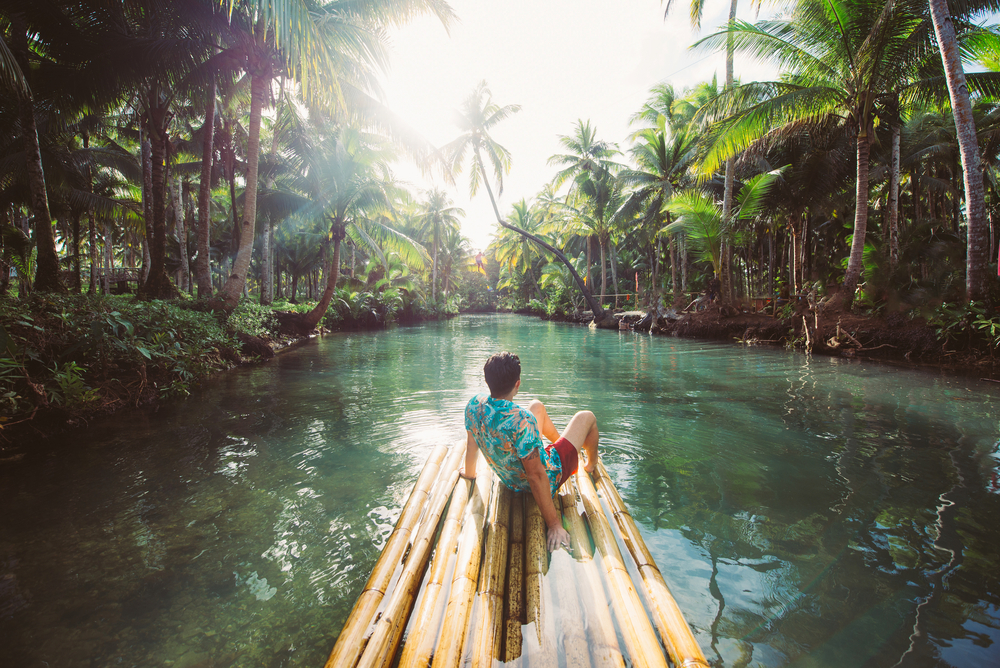
25. Take a staycation
In our honest opinion, staycations are seriously underrated. Not only can you hop from straight from work mode to vacation without struggling through a stressful travel day, but you can also save money and reduce your impact in the process.
26. Slow down with slow travel
Travel is about the journey, not just the destination. Slow travel places major emphasis on reducing our environmental impact and increasing connection. Take the train instead of a plane to chat with locals and enjoy the scenery. Hop on a bike instead of a car and whiz through all the unexplored alleyways.
27. Visit a “green” destination
No place can be 100% sustainable in every way, but “green” destinations actively work toward sustainability in an effort that involves everyone, including locals, NGOs, businesses, governments, and tourists.
28. Give over-touristed places a break
Overtourism happens when there are too many visitors in a single place or destination, impacting the infrastructure and landscape, and causing an increase in water consumption, air pollution, litter and waste. In 2021, the places most impacted by overtourism are: Barcelona, Venice, Iceland, Machu Piccu, and Amsterdam. These places are beautiful and should be visited, but let’s give them a quick breather first.
29. …But don’t toss away your bucket list
If you do decide to visit a destination impacted by overtourism, consider doing so outside of peak travel season (school breaks and summer months), and skip out on the group tours and tourist traps.
30. Visit destinations with tourism management plans
Destinations with active tourism management monitor how many visitors come and go. This data collection is hugely important for maintaining the sites, and preserving it for future visitors to come.
31. Do your best to avoid all-inclusives
Not all all-inclusive resorts are serious environmental offenders (we love a good eco resort!), but most displace and profit from local cultures and communities. If you don’t want to worry about who’s benefitting from your travel dollars, opt for a locally owned hotel or hostel instead.
32. …And cruise ships
In 2019, Carnival Cruises was slapped with a $20 million dollar fine for improper waste disposal (they were throwing it straight into the ocean, folks)…for the second time. On top of trash and pollution, most ships use “bunker fuel” which burns far dirtier than automobile gasoline. Huge quantities of fuel are required to move a giant cruise ship, resulting in huge emissions of CO2, as well as nitrogen and sulfur oxides.
Sustainable Travel Tips for: Getting Around
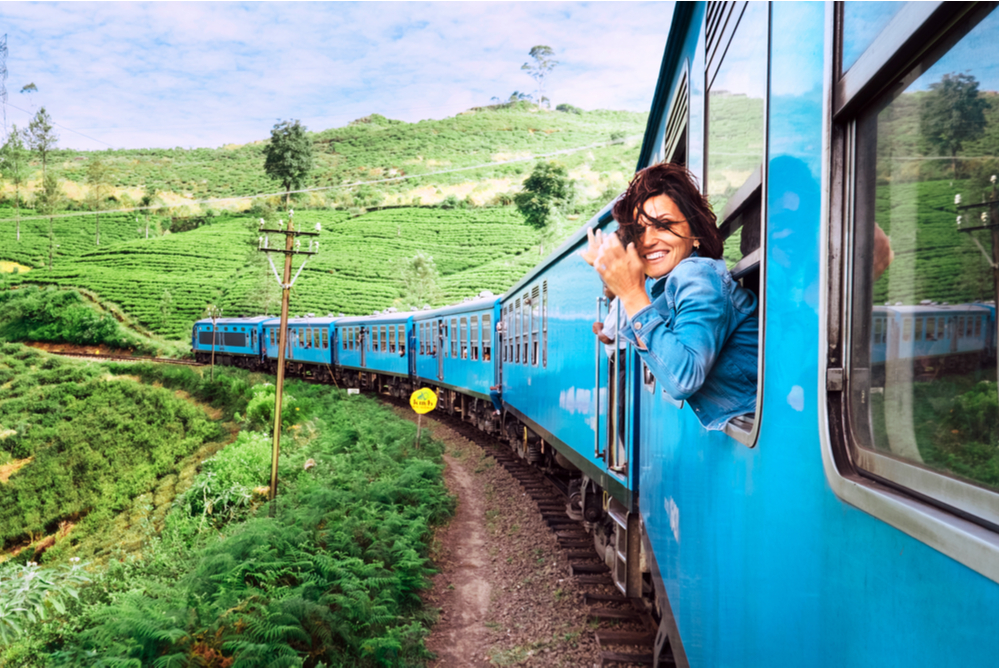
33. Walk, walk, and walk some more
Walking is hands-down the most environmentally-friendly way to explore a new place. Plus you can sneak in some exercise along the way!
34. Hop on a bike
Cycling contributes to zero environmental damage, keeps your blood pumping, takes up little space, and is super economical. Most major cities offer bike-share programs like Citi Bike in New York and Divvy in Chicago.
35. Rideshare
Wanna roll with us? Rideshare companies like Uber and Lyft are everywhere these days, providing travelers with increased flexibility and more agency over how they get from Point A to Point B.
36. …Or, hell, hitchhike
One step further, ask a stranger for a ride. Don’t forget to pick a safe spot, use common sense, let friends and family know where you are, and trust your gut.
Sustainable Travel Tips for: Hotels & Overnight Stays
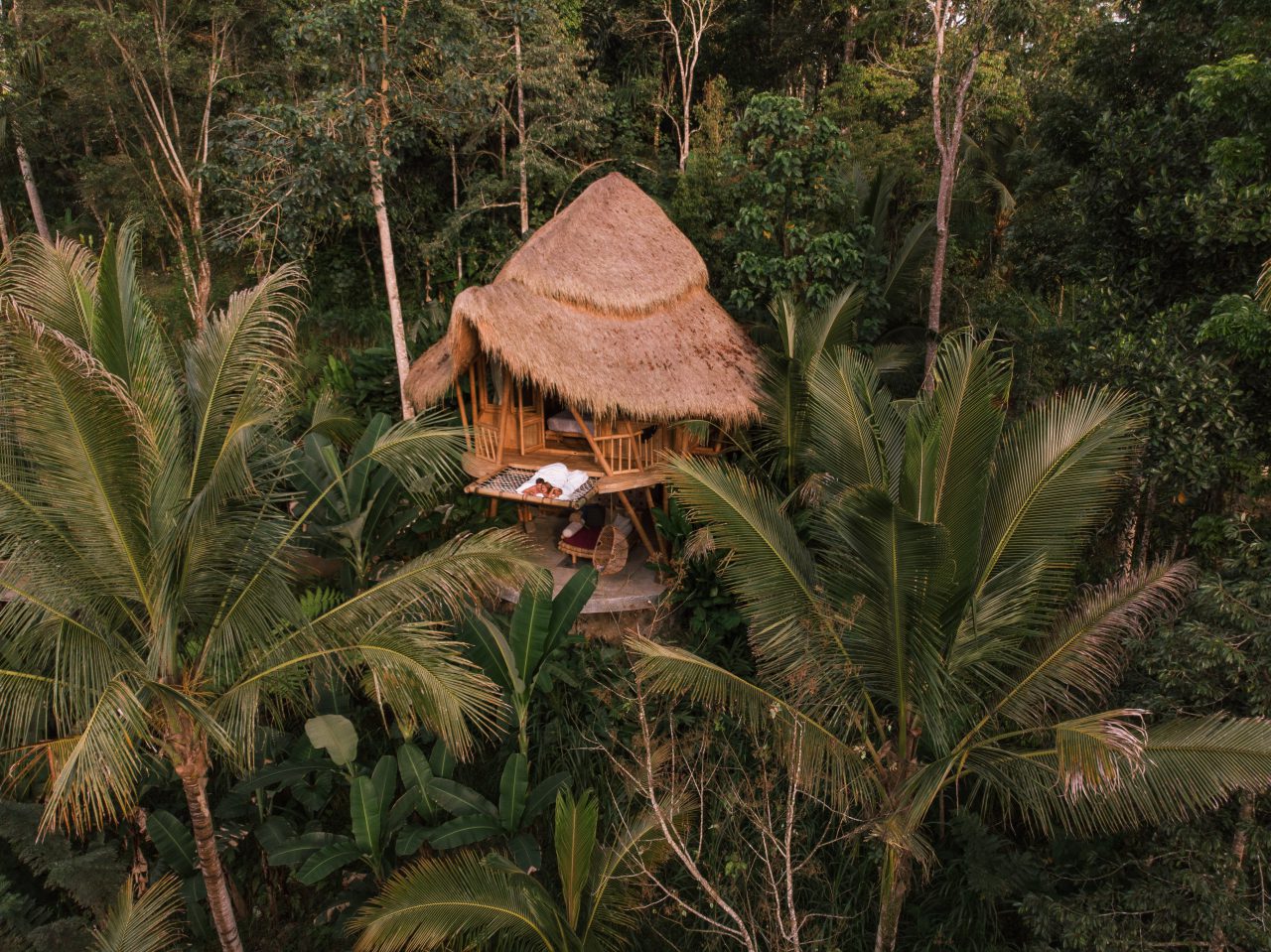
37. Take a speedy shower
Does decreasing shower time actually help save water? You betcha. According to NatGeo, toilets and showers account for the majority of a hotel’s water usage— not swimming pools. Keep local communities and systems in mind by taking a quick rinse at the start or end of the day.
38. Reuse towels
Laundry accounts for 16 percent of hotels’ water usage, which equates to significant energy costs. Let hotel staff know that you want to skip laundry day by hanging your towel back up after use (instead of leaving it on the vanity—or let’s be real— the bathroom floor).
39. Skip daily room cleaning
Towels, linens, trash bags, paper cutlery and napkins — all items that get changed or trashed with each daily room cleaning.
40. …And don’t forget to leave the “Do Not Disturb” sign on
The classic “Do Not Disturb” sign is both funny and helps cut down on the daily use of chemical cleansing products, electricity used in vacuuming, and the washing of bed sheets.
41. Don’t use the hotel’s laundry service
Hotel laundry services typically wash guest’s clothes separately— even when there are just a few items. Instead, hand wash small items or wait until you have a full load of clothes.
42. Pick a hotel with LEED Certification
To earn a LEED certification (Leadership in Energy and Environmental Design), a hotel is awarded points for satisfying requirements in six categories: sustainable sites, water efficiency, energy & atmosphere, materials & resources, indoor environmental quality and innovation in design. LEED certified hotels demonstrate a constant commitment to environmental stewardship and social responsibility — things that we can definitely get behind!
43. Stay at an eco lodge or resort
Sustainable travel is undeniably the future, and a ton of lodges, hotels and resorts around the world are already adopting eco-friendly practices to reduce their environmental impact. From busy urban retreats to bungalows tucked in nature, eco lodges are focused on waste reduction, energy efficiency, and water conservation… even down to the tiny details like linens, shower products, and water bottles.
44. Pitch a tent in the woods
Want to make basically no impact at all? Get off the grid completely. Camping is one of the most environmentally-friendly ways to snooze sustainably while exploring Mama Earth (we especially love camping in the national parks). Just make sure to pack eco-friendly hygiene products, use resources wisely, keep it local, and mind your waste.
45. …Or try glamping
We aren’t all built for sleeping on the cold hard ground. Enter: “glamping.” Glamping provides all the fun of camping with some of the comforts of home: boho rugs to keep your feet warm, a comfy king-size bed, a shower and sink. Major glamp search engine, Glamping Hub, allows visitors to filter by location, type (safari tents! towers! igloos!), and by impact (eco lodge or resort).
46. Stay in a hostel
Staying at hostels can be an amazing way to save money and make friends, but they’re also a great option for someone who’s down to share resources like rooms, beds, food, cab rides, and tours.
47. Stay with a local
Want to experience a place through the eyes of a local? Check out Homestay or Couchsurfer. Not only is it affordable and super eco-friendly (you’re borrowing everything from a bed to electricity), but it offers a ton of opportunity for real deal human connection.
48. Return paper maps & brochures
We’re all suckers for a good map or brochure, but let’s be real, most of them end up in the trash when we’re done. Return maps, brochures, and other tourist info once you’re finished with them so that they may be reused by future visitors.
Sustainable Travel Tips for: Travel Products & Amenities

49. BYO toiletries
Those tiny shampoo and conditional bottles are hella cute, but unfortunately, most of them end up in the landfill — used or unused. Instead, pack a small bag filled with reusables from home: shampoo, conditioner, toothpaste tablets, friendly floss, etc.
50. Get naked…with your soap
Along with having eco-friendly packaging and biodegradable formulas, “naked” shampoo bars are almost always all-natural, too, which means they don’t contain any chemicals that go into waterways and cause potential harm to wildlife.
51. Choose reusable (or biodegradable) makeup wipes
It takes years for makeup wipes to breakdown in the landfill, which is where they are most likely to end up. According to the FDA, most wipes are made from a combination of polyester, polypropylene, cotton, wood pulp, and rayon fibers, which is gross (you don’t want that on your face) and not even remotely biodegradable.
52. Pack a reusable menstrual cup
For the travel loving gals who have wandered up and down the supermarket isles in a random country unable to find the sanitary products that you’re accustomed to — this one’s for you. Trust us, these Lunette menstrual cups will revolutionize your travels, remove stress, and significantly reduce your monthly waste.
53. Use reef safe sunscreen
Reef safe sunscreen (this one is our fave) is more than just regular sunscreen in a biodegradable bottle. Reef safe doesn’t contain any chemicals that are harmful to the coral and other ocean life. Lather up and hit the water in peace.
Sustainable Travel Tips for: Food & Drink
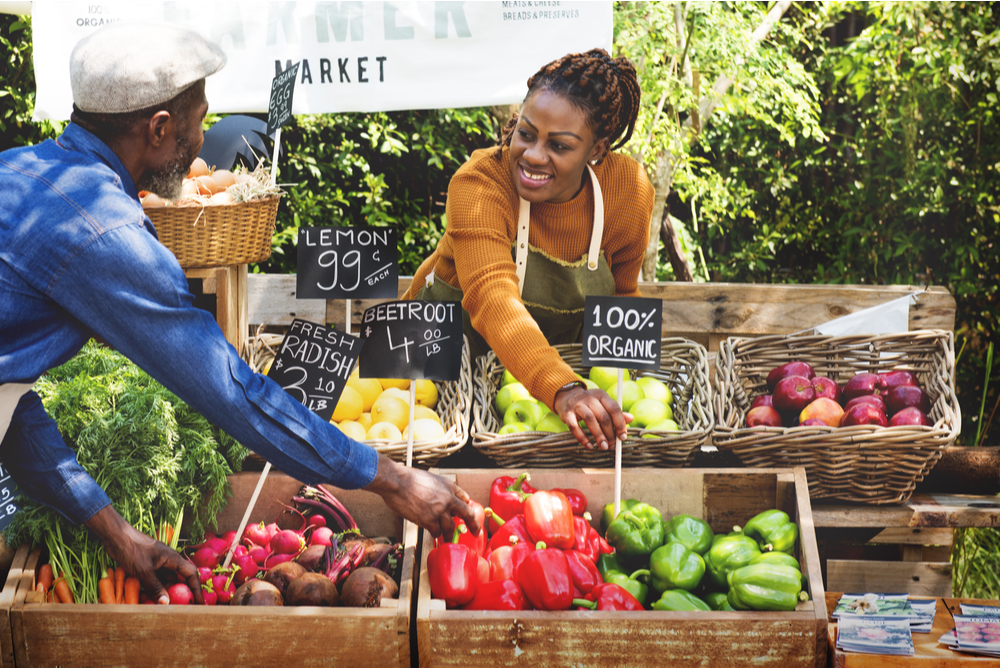
54. Bring your reusable water bottle with you everywhere
Three out of four single-use plastic water bottles—or 52.5 billion bottles—ended up in a landfill or incinerator each year. And, according to the Recycling Coalition of Utah, it takes up to 1,000 years for plastic to degrade in a landfill. Take a BPA-free water bottle you can refill over and over again.
55. Hit up farmers’ markets
Farmers markets have fruits and vegetables at the peak of the growing season. This means produce is at its freshest and tastes the best. Buying food typically grown in the region you’re visiting (not thousands of miles away or another country) supports local farmers and keeps the money in the local community.
56. Become a better chef
Let’s be real, you’re on vacation. You don’t want to spend your entire trip cooking. But! When making a meal at home (or in your hotel room), you know where each and every ingredient comes from. Carrots from the farmers market downtown, spices from the shop down the street, way-to-expensive wine from the local vineyard you visited last weekend.
57. BYO doggie bag
Ditch the restaurant doggie bag and bring your own. The best doggie bag is a washable, plastic, container that can be packed flat or carried in a purse or backpack.
58. Skip the buffet
This one’s rough, because you know we love those DIY hotel waffles as much as the next person, but buffets produce a tremendous amount of food waste (they’re actually one of the largest sources of food waste in hotels, especially when it comes to high value foods, like meat). Instead, head to a restaurant for a deelish made-to-order meal without the guilt.
59. Drink “near beer”
That’s right, folks. Drinking local craft beer is good for the Earth! Craft breweries support their communities by buying and using fresh, local ingredients.
60. Say f**k no to plastic straws
Five hundred million straws are used each day by people in the United States alone, and most of those end up in the oceans polluting the water and killing marine life. A report from New Plastics Economy details that by the year 2050, there will be more plastic in the ocean than fish. When dining out, bring a reusable straw (we dig these) or ask for a compostable option.
61. …And to unethical food practices
Shark Fin Soup is a traditional Chinese cuisine that’s been associated with wealth and luxury in China since late 20th century. The shark meat tastes like nothing, so it’s really only sought after for its status. Today, approximately 100 million sharks are killed each year for their fins, posing a major threat to the world’s oceans and shark populations.
62. Eat local (and like a local)
While temping (especially after a few drinks, if you know what we mean), don’t be the tourist who only eats at McDonalds while traveling. By stopping at local food trucks and spending money at fresh farmers markets, you not only get to enjoy new cuisine, but you also get to chat up the locals about the city.
63. Try more plant-based foods
A plant-forward diet can have a significant positive impact on the environment (and your health!). Research shows that the meat and dairy industries are fueling the climate crisis, while plant-based diets—focused on fruits, vegetables, grains, and beans—help protect the planet.
64. Stop buying takeaway coffees
PSA: Your paper cups aren’t recyclable. If you’re craving a morning cup at a cute local coffeeshop, doing forget your reusable mug.
65. …But definitely support local coffeeshops and roasters.
Fair trade coffee is sourced following a strict set of rules that ensure products are produced with sustainable practices. Fair trade coffee is certified by a non-profit organization like Fair Trade USA, so check for that label next time you pick up a bag of local beans.
Sustainable Travel Tips for: Booking Tours & Experiences
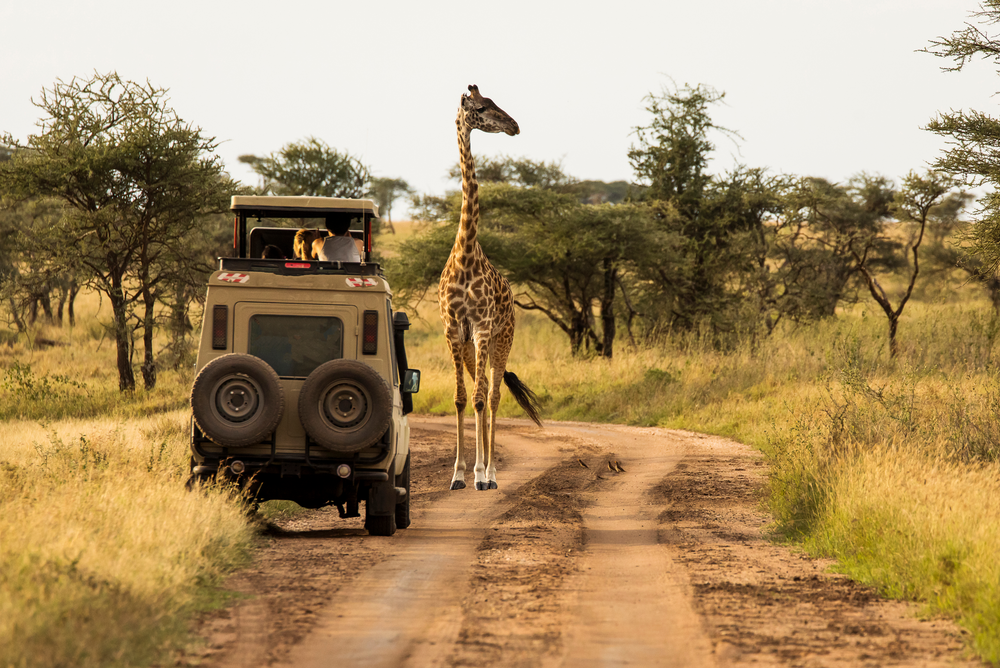
66. Book a small tour
Large groups overwhelm places and make everyone else’s experience miserable, whether it’s at a local restaurant or in an art museum. Respect the locals and do your best to travel in groups of 6 people or less.
67. Hire local guides
Does hiring a local guide actually matter? It sure does. Not only do you get to see the city or country through their eyes, but your investment also directly supports the local community that you’re visiting.
68. Admire wildlife from a distance
A fun tip: if you can cover the entire wild animal with your thumb, you’re at a safe and respectful distance. Any tours that promise you anything more (up-close encounters, interaction, and petting) should be crossed off your list immediately.
69. …But never support wildlife experiences
Holding sea turtles, bathing elephants, riding camels, petting tigers, hugging baby sloths— we’ve all seen the pics (sup boys on Tinder) and been tempted. While super cute, these animals are best enjoyed in their natural habitat. Most, if not all, animal encounters are the opposite of compassionate and kind. Built on a foundation of fear and discomfort, non-certified “sanctuaries” exploit wild animals and use them for tourist entertainment. Want to learn more about wildlife, but not sure where to start? Check out our guide to ethical animal tourism worldwide.
70. And never, ever ride an elephant
Phajaan, or elephant crushing, is a long-standing accepted tradition in Thai culture that uses fear and pain to tame elephants for the tourism industry. Elephants are caged, chained, and punished into submission, essentially breaking their instincts— and their spirits. Find happy, healthy elephants in the wild by hiring a responsible guide to take you through the national parks and game reserves.
71. Volunteer
Volunteering abroad is one of the most rewarding things that a seasoned traveler can do. On a volunteer trip, the primary purpose is to work and to serve. Trying to spot a good volunteer opportunity overseas? Ask yourself: is the opportunity supply driven (ie: are your skills wanted and needed in the community)? Are you required to prepare for your trip with research, classes or training? Do they place an emphasis on success happening after you leave instead of while you’re there? These are all good signs of a successful (and ethical) program.
72. … But don’t partake in voluntourism
While it generally comes from a good place and with the best intentions, sometimes volunteering actually causes more harm to local communities than good. Voluntourism is typically short-term, paid participation. It’s group oriented, run by a company, doesn’t require training, and places a heavy emphasis on the volunteer’s experience above the local community’s best interest. Before signing up for a volunteer trip, look at the requirements (length of stay, skill level required, and cost) before determining if you’ll be volunteering, or participating in the voluntourism industry.
Sustainable Travel Tips for: Respecting Wildlife & Nature
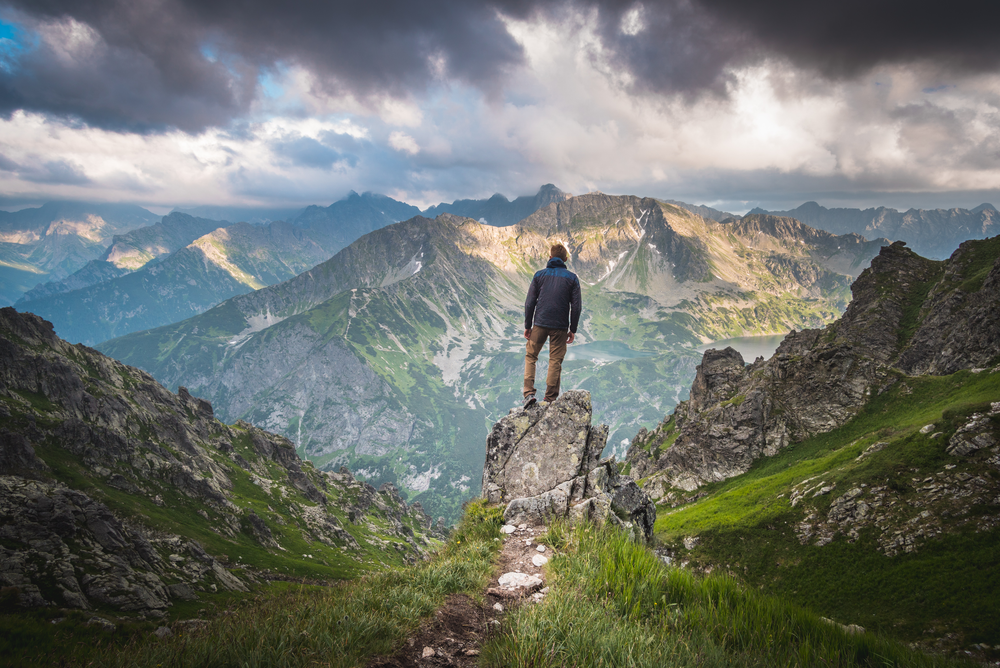
73. Stay on trail
Trail routes are established to create places for people to enjoy the beautiful surroundings while causing minimal damage to the environment.
74. …And watch your step
One wrong step can cause damage to vulnerable species— plant or animal.
75. Keep an eye on your campfire
With wildfires raging out of control, think before you strike that match, Make sure you know the fire danger and restrictions for the area you’re camping in.
76. Carry in, carry out
Whatever you carry in to the woods, you should carry out. Any trash you’ve crated should be disposed of once you get home.
77. Don’t feed or touch wildlife
According to the NPS, feeding animals or allowing them access to human food causes a number of problems: it changes their behavior, it causes them to lose their instinctive fear of humans, and it puts everyone (including you) in danger.
78. Don’t touch coral reefs
They’re extremely fragile, and snorkelers touching and walking on them causes serious, irreversible damage.
79. Don’t litter
Do we have to explain? Just don’t do it, friends.
80. …and pick up any trash you do find on the trail
Call us weirdos, but picking up trash on a trail just feels good. Not only are you doing a good deed, you might even inspire another hiker to do the same.
81. Dispose of human waste properly
Cat holes are the most widely accepted method of waste disposal. How to: with a small garden trowel, dig a hole 6-8 inches deep and 4-6 inches in diameter. Always place cat holes at least 200 feet from water, trails and camp. When not properly disposed of, human waste can pollute water sources, spread disease, or cause the next camper to have a very, very bad day.
Sustainable Travel Tips for: Souvenirs & Shopping

82. Buy eco-conscious souvenirs
If you’re spending money, invest in things that have not caused environmental harm. Look for products that are natural, organic, zero or low carbon, and from sustainable and non-polluting sources.
83. Shop community-first
Before you buy, make sure that products or businesses aren’t exploiting workers or putting them in harm’s way.
84. Pack a reusable bag
Not only is it good for the environment, but it’s usually easier for the sellers, too!
85. Seek out indigenous artisans
Don’t buy something that says “Made in China” when you’re in Brazil. Ask a friend or guide to take you to the right places if you’re having a hard time finding local goods or art
86. …And invest in woman-owned businesses
Support businesses and products that are run by, and empower, local women.
87. Don’t buy anything made of animal parts
In a lot of places around the world, wild animal products are often marketed to tourists as high-end, luxury souvenirs. Never, ever purchase product made of elephant tusk, coral, fur, turtle shells, etc.
Sustainable Travel Tips for: People & Communities

88. Acknowledge Native lands
Before you visit any place with a history (AKA, everywhere), do your homework. Acknowledging Native lands “is important to understand the longstanding history that has brought you to reside on the land, and to seek to understand your place within that history. Land acknowledgements do not exist in a past tense, or historical context: colonialism is a current ongoing process, and we need to build our mindfulness of our present participation.”
89. Learn a bit of the language
Just a few phrases, no need to be fluent. Saying hello to someone in their native language immediately starts your interaction off on the right foot. If you need a quick refresher, we love Babbel and Duolingo.
90. Respect the dress code
In many Islamic, Buddhist, Hindu and Orthodox countries, a strict dress code applies. Be mindful of what you wear, especially when visiting religious sites and local villages.
91. Follow and understand local laws & customs
Learning about a country’s customs and culture can help guide tourists through some pretty-tricky waters. To avoid making an embarrassing mistake (or worse, breaking a law) read up before you arrive or ask a local for help.
92. Ask permission before taking photos
Photos make important memories, but always remember to respect the people and the places you visit. Don’t take anyone’s photo without their permission, and definitely don’t take photos that exploit children or traditions.
93. …And before exploring sacred places and private land
Want to explore a burial site? A temple? Attend a religious ceremony? Always, always ask permission first, and make sure to follow-up with questions about etiquette, dress code, and expectations for participation.
94. Be mindful of holidays and current events
Before you roll up, do your homework and find out what’s going on in the place that you’re visiting. Not only will it help get you super excited for your trip, but it will set realistic expectations (do stores close early? Will a giant street parade block transportation?)
95. Don’t over-bargain
In a lot of places around the world, locals makers and creators depend on making their livable income through selling goods, services, and food to visitors. While that change might not put a huge dent in your pocket, it can make all the difference to a family running their business.
96. Donate what you don’t need before you leave
If you have a bit of extra local currency that you don’t want to spend, do your research and find a responsible, local NGO to donate to before you leave.
97. …But don’t give money to children
When we see kids begging, we want to help. While that instinct comes from a good place, our help isn’t always helpful. And at its very worst, the children may be part of a trafficking scheme that exploits them for money.
98. Understand the tipping culture
Be sure to find out if tips are expected in the place you are visiting. And if so, what percentage? Read up so that you’re not caught in a super awkward situation at a cafe or restaurant.
99. Leave positive reviews
If you had a good experience, don’t hesitate to share it. Thorough and honest reviews help elevate trustworthy, ethical businesses while weeding out the rest. And don’t forget to tell friends, family and your pals on Seeker.
100. Be kindhearted and openminded
This one is pretty simple. One of the best parts of travel is making deep, authentic connections, understanding each other, appreciating, and accepting our differences. Smile, make yourself available, ask questions, offer help, and say thank you often.
101. Share your story
When chatting with locals, listen to their stories and share yours. Relationships are give and take, so don’t forget to offer up parts of yourself, too.